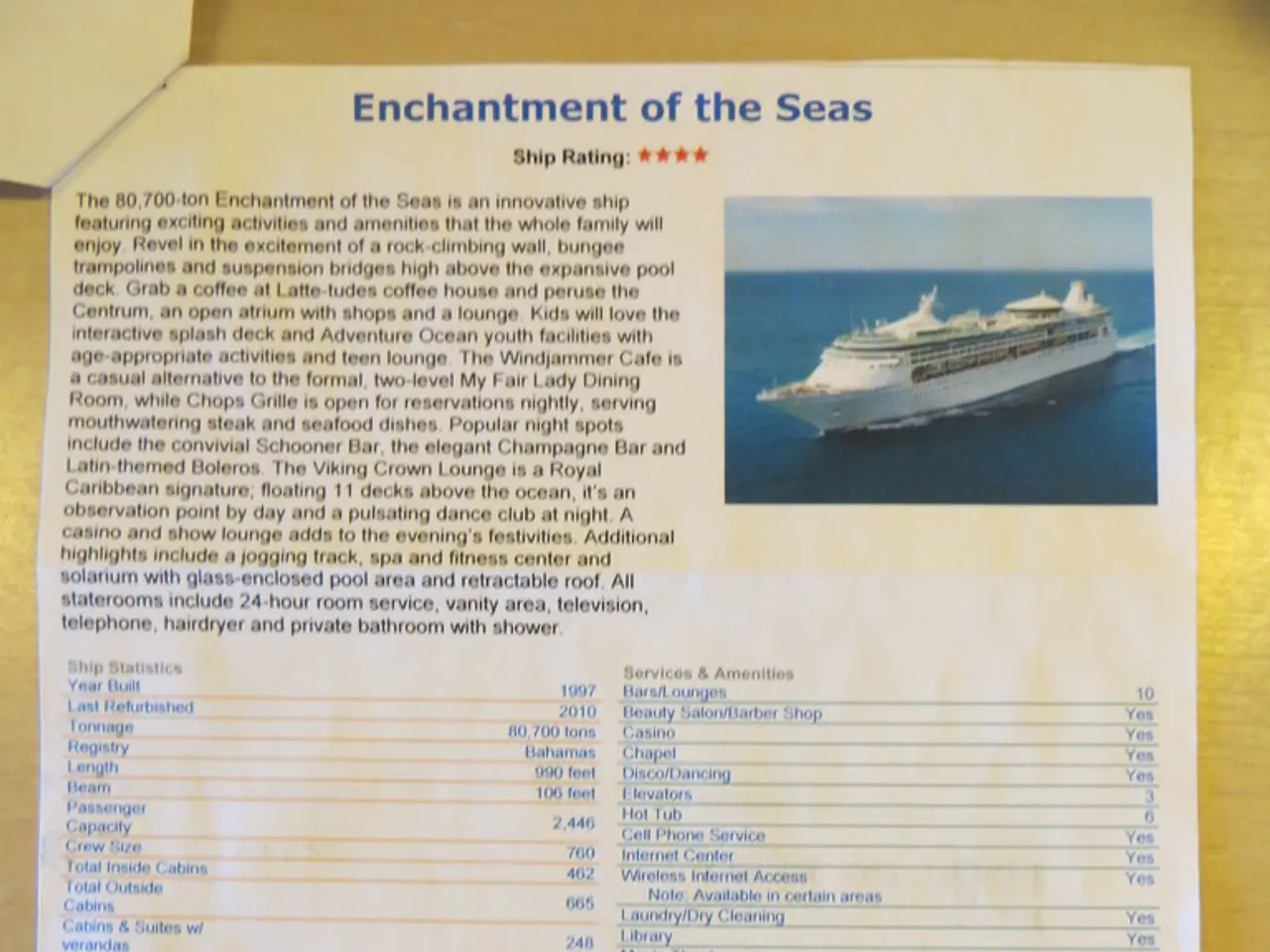Transforming the Tide: TF 76/3, Modification, Trials, and the Combined Force
Task Force 76/3 Enhances Indo-Pacific Naval Strategy
Task Force 76/3 (TF 76/3), a specialized naval task force within the U.S. Navy's Seventh Fleet, is revolutionizing force design, interoperability, littoral warfare, and maritime campaign planning in the Indo-Pacific region.
The task force, composed of approximately 11,500 sailors and Marines, is a key component in countering the challenges posed by the People's Republic of China (PRC). By merging the Marine Corps's fires and effects center, the Navy's sea combatant commander, the Navy's information warfare commander, and communications strategy under the joint fires process, TF 76/3 creates a unified command structure.
This integrated naval command fuses Navy and Marine Corps maritime fires and sensor networks, leverages maritime sustainment capability, creates a seamless intelligence and operational picture, and unifies long- and short-range planning across maritime and littoral capabilities.
Adapting to Evolving Threats
TF 76/3 helps adapt naval and joint force capabilities to meet evolving threats in the littorals, a domain critical in the Indo-Pacific where much of the PRC's maritime activity occurs. The task force fosters joint and combined operations among U.S. Navy, Marine Corps, and allied forces in the region to ensure seamless communication, command, and control during complex operations.
Littoral Warfare and Maritime Campaign Planning
The task force develops tactics and operational frameworks focused on operating in shallow coastal waters typical of the Indo-Pacific’s island chains and straits, where the PRC projects its maritime power. It supports holistic planning for sustained naval campaigns, integrating sea control, sea denial, and power projection aimed at deterring or countering PRC maritime assertiveness.
A Template for the Joint Force
TF 76/3 offers a template for the joint force to address issues of force design, interoperability, littoral warfare, and maritime campaign planning. The integrated littoral warfare center (ILWC) provides a common maritime operating picture for integrating Marine Corps and Navy capabilities, merging two traditionally separate one-star-level command posts.
The ILWC allows joint force capabilities to seamlessly interact and creates a shared understanding for any numbered fleet or joint task force. The open forums provide ownership to individuals at all levels of the command, fostering innovation and adaptability in the face of evolving threats.
A Period of Experimentation and Revitalization
TF 76/3 is an eighteen-month period of experimentation and naval power revitalization for Expeditionary Strike Group Seven and the 3rd Marine Expeditionary Brigade. The successful implementation of force design into force structure is a learning process, not just adapting doctrinal updates and fielding new equipment.
The new command-and-control structure of TF 76/3 can integrate and employ emerging Marine Corps units like the Marine littoral regiment in close concert with its surface combatant assets and the Marine expeditionary unit's fifth-generation aircraft. The combined actions of the various planning and execution cells have an amplifying effect across multiple domains.
Forward Deployment and Naval Experimentation
TF 76/3 is forward deployed within the People's Liberation Army's (PLA) weapons engagement zone, executing daily operations while conducting naval experimentation. The task force is focused on increased lethality, distributed operations, greater naval integration, and sustaining stand-in forces.
The ILWC facilitates the synchronization of fires and effects across multiple domains, enabling TF 76/3 to address issues in the land, air, and sea domains simultaneously. The new design for twenty-first-century naval warfare and model for how the joint force evolves has value outside the Indo-Pacific, offering a blueprint for other naval forces to adapt and respond to evolving threats.
- Task Force 76/3 (TF 76/3) creates a unified command structure, merging the Marine Corps's fires and effects center, the Navy's sea combatant commander, the Navy's information warfare commander, and communications strategy under the joint fires process, contributing significantly to national security and defense policies.
- The integrated naval command of TF 76/3 fuses Navy and Marine Corps maritime fires and sensor networks, leverages maritime sustainment capability, and creates a seamless intelligence and operational picture, aiding military operations and general news.
- By focusing on operating in shallow coastal waters typical of the Indo-Pacific's island chains and straits, TF 76/3 helps adapt naval and joint force capabilities to meet evolving threats, particularly those posed by the People's Republic of China (PRC) in the Indo-Pacific region.
- The integrated littoral warfare center (ILWC) developed by TF 76/3 offers a common maritime operating picture for integrating Marine Corps and Navy capabilities, providing a vital template for addressing issues of force design, interoperability, and maritime campaign planning in policy-and-legislation and politics.
- Forward deployed within the People's Liberation Army's (PLA) weapons engagement zone, TF 76/3 executes daily operations while conducting naval experimentation, embracing increased lethality, distributed operations, greater naval integration, and sustaining stand-in forces, with potential value for other naval forces facing evolving threats.







